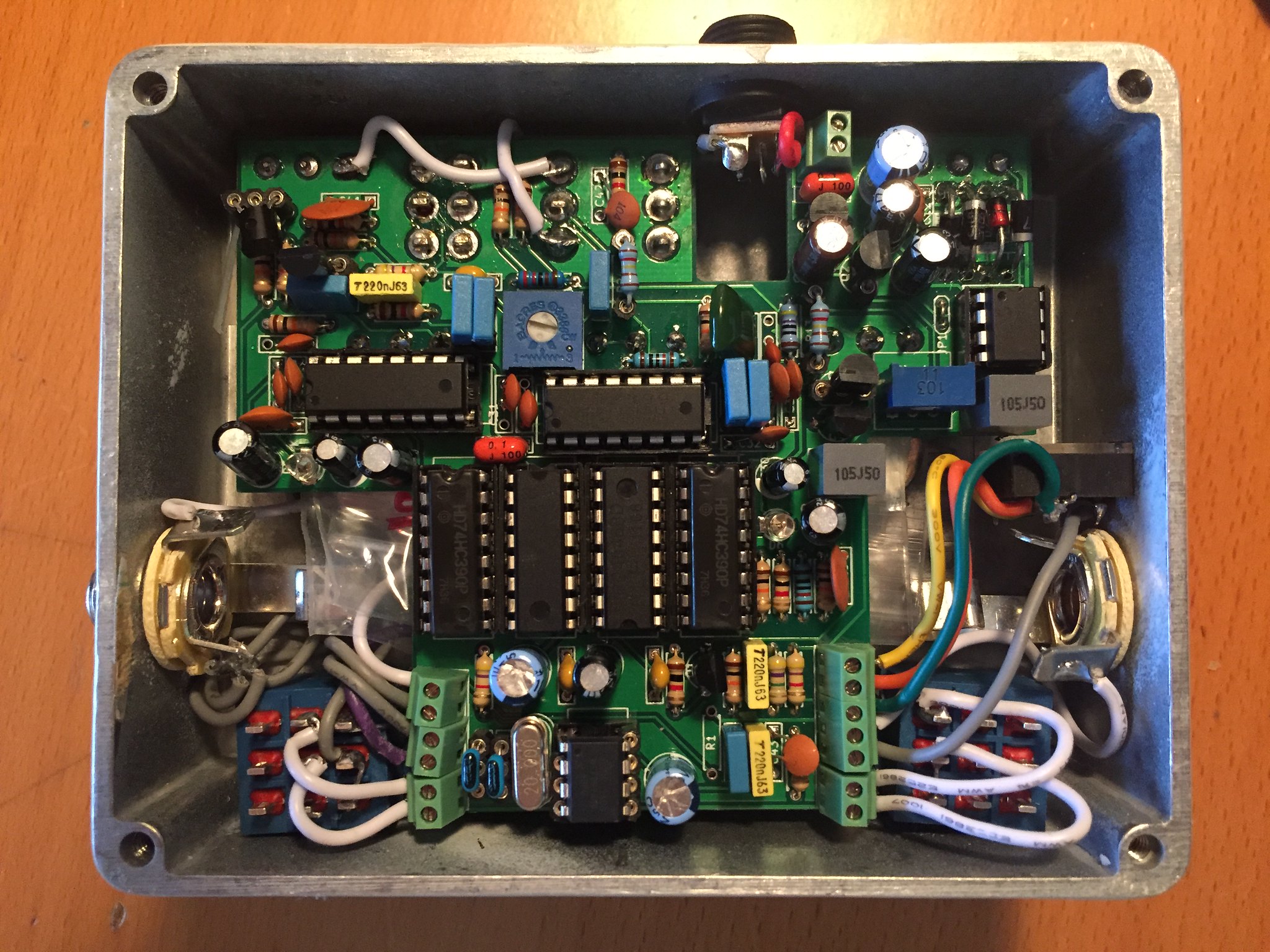Here's mine: Tonefiend's first DIY Club project, which as I understand it is an Electra Distortion. Pretty much from day one I was busy stuffing way too much stuff into a pedal.
 IMG_1700 by dickolaswang, on Flickr
IMG_1700 by dickolaswang, on Flickr
 IMG_1704 by dickolaswang, on Flickr
IMG_1704 by dickolaswang, on Flickr
 IMG_1726 by dickolaswang, on Flickr
IMG_1726 by dickolaswang, on Flickr
 IMG_1727 by dickolaswang, on Flickr
IMG_1727 by dickolaswang, on Flickr
 IMG_1728 by dickolaswang, on Flickr
IMG_1728 by dickolaswang, on Flickr
 IMG_1700 by dickolaswang, on Flickr
IMG_1700 by dickolaswang, on Flickr IMG_1704 by dickolaswang, on Flickr
IMG_1704 by dickolaswang, on Flickr IMG_1726 by dickolaswang, on Flickr
IMG_1726 by dickolaswang, on Flickr IMG_1727 by dickolaswang, on Flickr
IMG_1727 by dickolaswang, on Flickr IMG_1728 by dickolaswang, on Flickr
IMG_1728 by dickolaswang, on Flickr

 )
)



